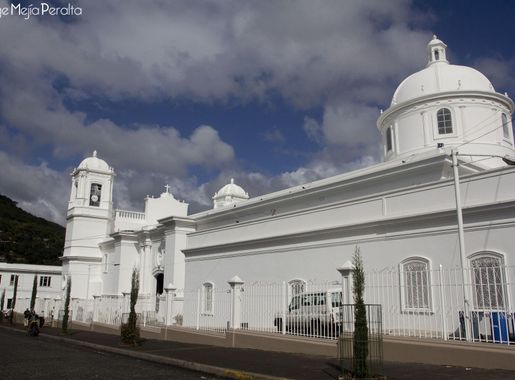
Matagalpa Coffee Region: Nicaragua's Coffee Paradise
Discover the Matagalpa Coffee Region, where lush landscapes, rich coffee heritage, and vibrant culture come together in the heart of Nicaragua's highlands.
Nestled in the lush highlands of Nicaragua, the Matagalpa Coffee Region is a scenic haven for coffee enthusiasts and nature lovers alike. This verdant area is known for its sprawling coffee plantations, where some of the world's finest beans are grown. Visitors can tour these plantations, learn about the coffee-making process, and savor freshly brewed cups while overlooking breathtaking landscapes. Beyond its coffee heritage, Matagalpa offers a rich cultural experience. The charming town of Matagalpa is the heart of the region, boasting quaint streets, vibrant markets, and warm, welcoming locals. Here, you can explore local crafts, taste traditional Nicaraguan dishes, and immerse yourself in the local way of life. Nature is ever-present in Matagalpa, with its rolling hills, dense forests, and cascading waterfalls. Outdoor enthusiasts will find plenty to do, from hiking and bird-watching to exploring natural reserves. The region's cooler climate provides a refreshing escape from the heat, making it an ideal destination for relaxation and adventure.
Local tips in Matagalpa Coffee Region
- Visit during the coffee harvest season (November to March) to witness the full coffee production process.
- Wear comfortable shoes and bring a light jacket, as the region's climate can be cool and the terrain is often hilly.
- Hire a local guide to enhance your experience and gain insider knowledge about the region's history and culture.
- Sample local dishes at the town markets; the Nicaraguan gallo pinto and nacatamales are must-tries.
- Take time to visit the nearby natural reserves for stunning views and opportunities to see local wildlife.
Matagalpa Coffee Region: Nicaragua's Coffee Paradise
Nestled in the lush highlands of Nicaragua, the Matagalpa Coffee Region is a scenic haven for coffee enthusiasts and nature lovers alike. This verdant area is known for its sprawling coffee plantations, where some of the world's finest beans are grown. Visitors can tour these plantations, learn about the coffee-making process, and savor freshly brewed cups while overlooking breathtaking landscapes. Beyond its coffee heritage, Matagalpa offers a rich cultural experience. The charming town of Matagalpa is the heart of the region, boasting quaint streets, vibrant markets, and warm, welcoming locals. Here, you can explore local crafts, taste traditional Nicaraguan dishes, and immerse yourself in the local way of life. Nature is ever-present in Matagalpa, with its rolling hills, dense forests, and cascading waterfalls. Outdoor enthusiasts will find plenty to do, from hiking and bird-watching to exploring natural reserves. The region's cooler climate provides a refreshing escape from the heat, making it an ideal destination for relaxation and adventure.
When is the best time to go to Matagalpa Coffee Region?
Iconic landmarks you can’t miss
Selva Negra
Experience the beauty of Nicaragua at Selva Negra, a unique resort hotel that blends nature, adventure, and local culture in stunning Matagalpa.
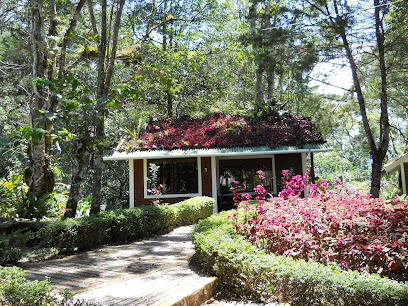
Eco-Lodge Cascada Blanca
Discover the serene beauty of Eco-Lodge Cascada Blanca, a nature preserve perfect for relaxation, hiking, and connecting with wildlife in Nicaragua.
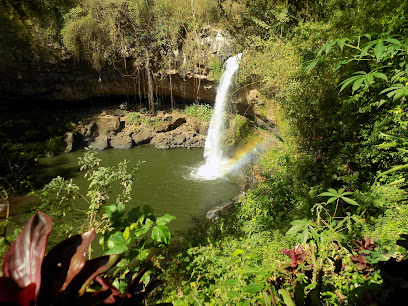
Coffee Shop Barista
Discover the rich flavors of Nicaragua at Coffee Shop Barista, Matagalpa's beloved destination for coffee and breakfast lovers.
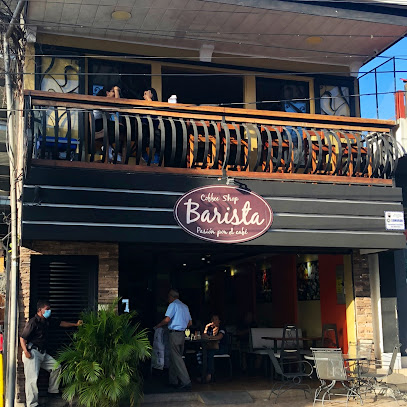
Mirador Calvary
Discover the breathtaking views of Matagalpa at Mirador Calvary, a serene tourist attraction perfect for nature lovers and photography enthusiasts.
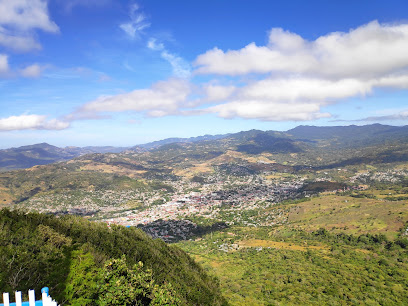
Selección Nicaragüense • Parque Darío
Discover the rich flavors and warm ambiance of Selección Nicaragüense, a coffee shop in Matagalpa that embodies Nicaraguan coffee culture.
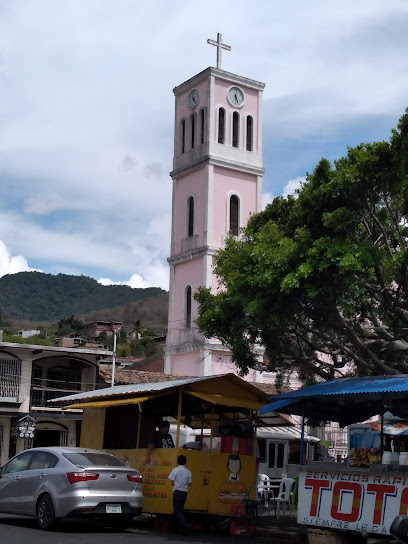
Mokali Café Matagalpa
Experience the rich flavors of Nicaraguan coffee in a cozy atmosphere at Mokali Café, the perfect spot for coffee lovers in Matagalpa.
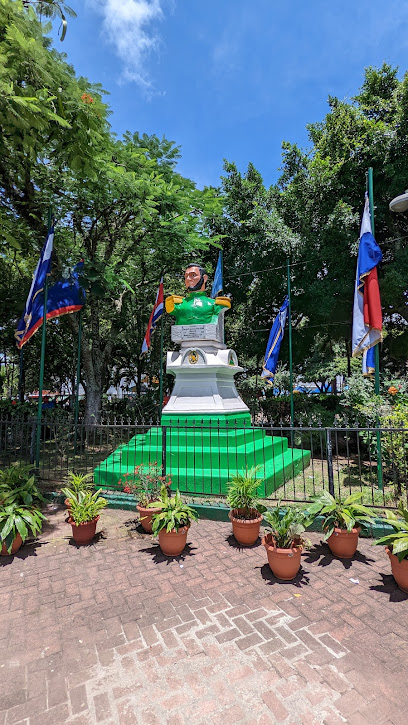
Selva Negra Ecolodge
Explore the breathtaking landscapes and savor delicious German cuisine at Selva Negra Ecolodge in Matagalpa, Nicaragua.
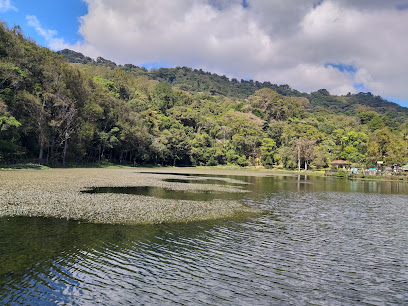
Gato Blanco
Experience the vibrant flavors of Nicaraguan cuisine at Gato Blanco, a charming restaurant in the heart of Matagalpa, perfect for any food lover.
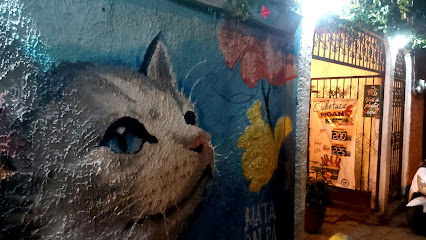
Hostal La Buena Onda
Discover the heart of Matagalpa at Hostal La Buena Onda, your cozy retreat for culture, comfort, and coffee adventures.
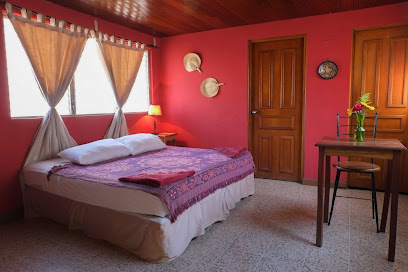
MOUNTAIN OF PEACE
Discover the serene beauty and spiritual tranquility of the Mountain of Peace in Matagalpa, Nicaragua, a must-visit destination for every traveler.
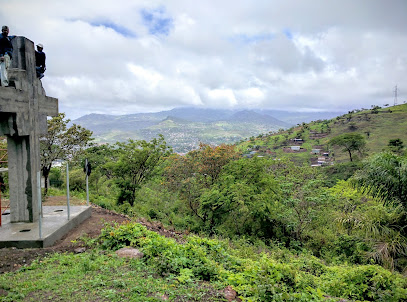
Diagon Alley Delicatessen store Matagalpa
Experience the magic of gourmet coffee and delightful snacks at Diagon Alley Delicatessen in Matagalpa, a must-visit for food lovers and families.
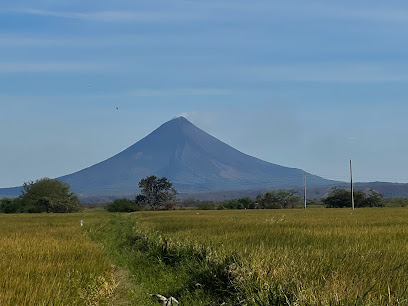
Coffee Time
Experience the rich flavors of Nicaraguan coffee at Coffee Time, a cozy retreat in Matagalpa that blends local culture with delightful brews.

Matagalpa Tours
Explore Nicaragua's highlands with Matagalpa Tours, offering unforgettable adventures through lush landscapes and vibrant local culture.
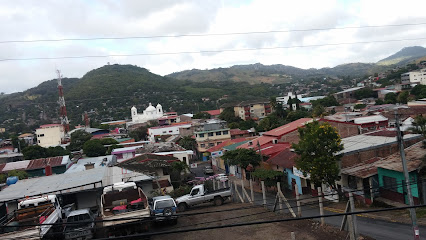
Cerro El Calvario,Matagalpa.
Explore the stunning vistas of Cerro El Calvario in Matagalpa, Nicaragua, where breathtaking views and rich nature await every traveler.
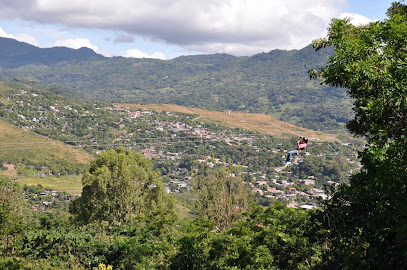
Mulukakao
Experience the ultimate chocolate shop in Matagalpa with handcrafted chocolates, artisanal coffee, and a cozy atmosphere at Mulukakao.
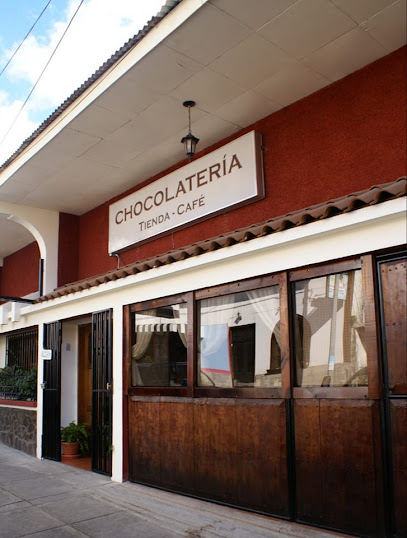
Unmissable attractions to see
Parque Los Monos
Explore Parque Los Monos in Matagalpa, a serene park filled with lush greenery, playful wildlife, and perfect spots for relaxation and family fun.
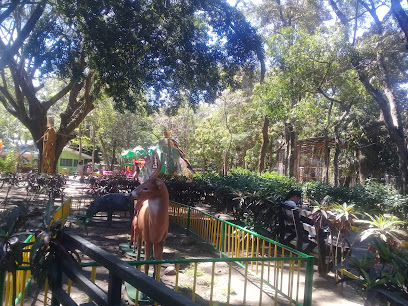
El Calvario Ecological Park
Experience the serene beauty of El Calvario Ecological Park, a natural haven in Matagalpa, Nicaragua, perfect for outdoor adventures and relaxation.
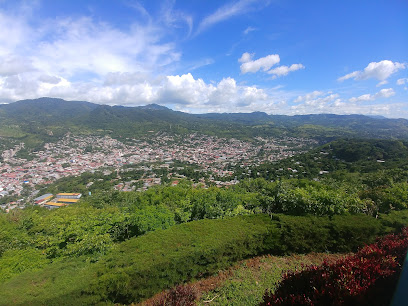
Waterfall Moon
Explore the enchanting Waterfall Moon in La Empresa, a breathtaking park with stunning waterfalls and lush landscapes perfect for all nature lovers.
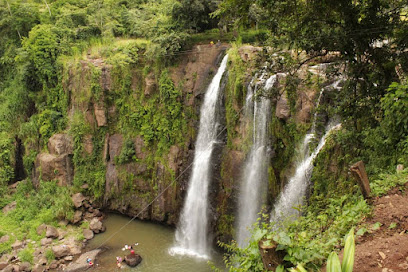
Selva Negra Ecolodge
Immerse yourself in nature at Selva Negra Ecolodge, where eco-tourism meets German culinary heritage in the stunning landscapes of Matagalpa.
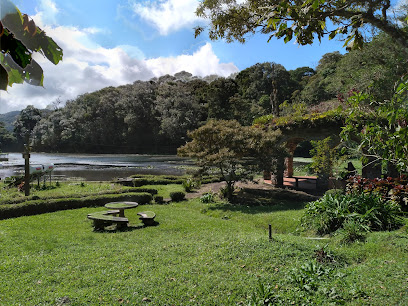
Cerro El Calvario,Matagalpa.
Discover the breathtaking views and serene atmosphere at Cerro El Calvario, Matagalpa's stunning observation deck and tourist attraction.
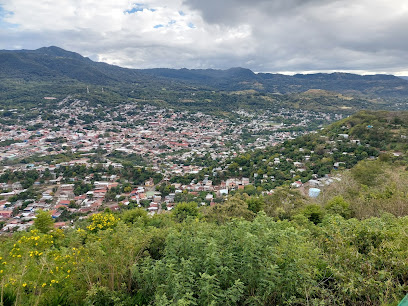
Parque Solingalpa
Explore the natural beauty of Parque Solingalpa, a tranquil park in Matagalpa offering lush greenery, scenic paths, and a peaceful atmosphere for relaxation.
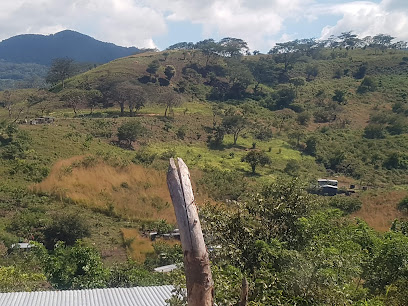
Plaza Juan Pablo II
Experience the tranquil beauty of Plaza Juan Pablo II, a serene park in Matagalpa, Nicaragua, perfect for relaxation, culture, and nature.
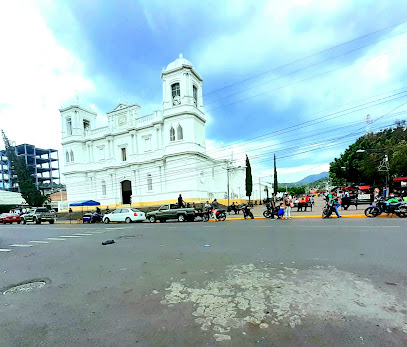
Reserva natural Cerro Arenal
Explore the breathtaking biodiversity of Reserva Natural Cerro Arenal in Matagalpa, Nicaragua, a true haven for nature lovers and adventurers.
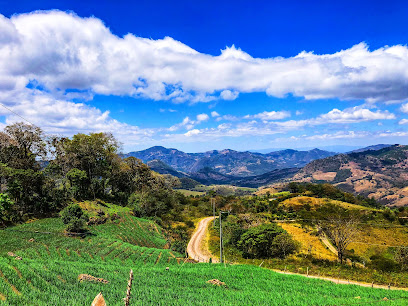
Sendero Turístico La Cruz de Apante
Explore the breathtaking Sendero Turístico La Cruz de Apante, a scenic hiking trail in Nicaragua offering stunning views and a tranquil natural escape.
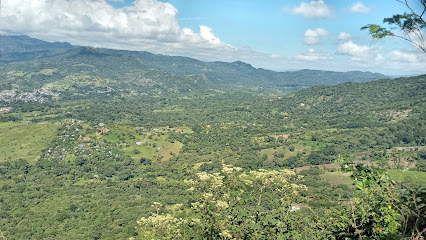
Cascada apante
Discover the enchanting Cascada Apante in Matagalpa, a serene waterfall surrounded by lush landscapes, perfect for adventure and relaxation.
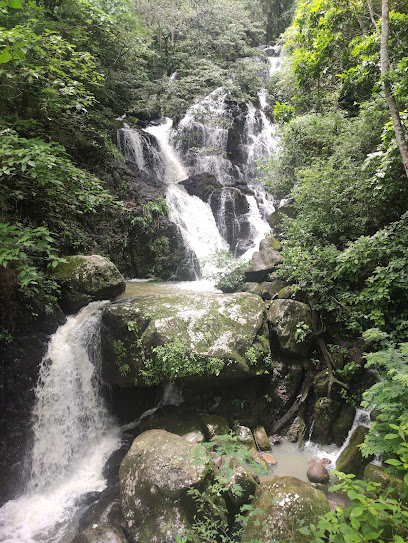
Finca Awas Tagni
Explore Finca Awas Tagni, a breathtaking hiking area in Matagalpa, Nicaragua, perfect for nature lovers and outdoor enthusiasts.
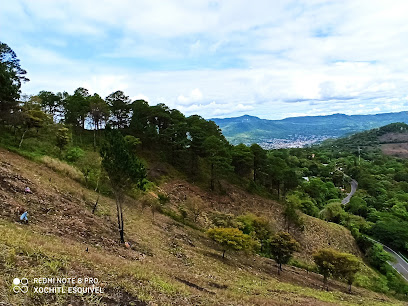
Plaza Del Rio Grande
Explore the lush landscapes and serene atmosphere of Plaza Del Rio Grande, the perfect park for relaxation and natural beauty in Matagalpa, Nicaragua.

Hajime
Discover the breathtaking trails of Hajime in Matagalpa, a must-visit hiking area offering stunning views and serene nature experiences.
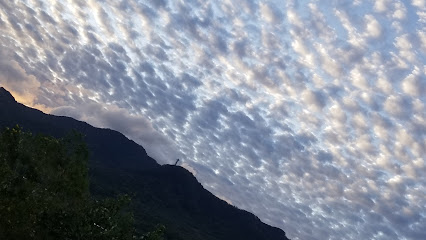
Finca del Carmen López López
Explore the breathtaking landscapes and rich coffee culture at Finca del Carmen López López, a must-visit tourist attraction in Matagalpa, Nicaragua.
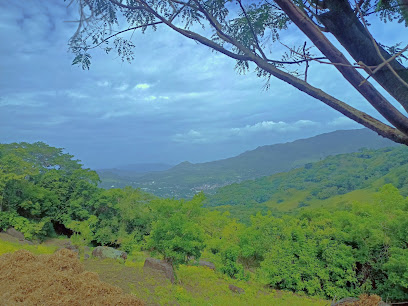
lazo
Experience the tranquil beauty of Lazo Garden in Matagalpa, a serene escape filled with vibrant flora and a peaceful atmosphere perfect for relaxation.
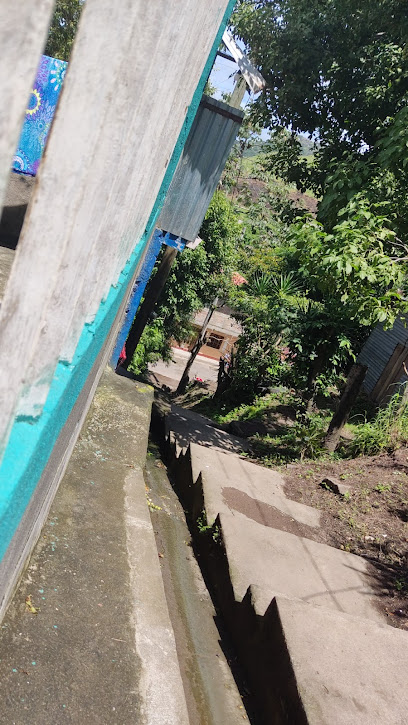
Essential places to dine
Coffee Shop Barista
Experience authentic Nicaraguan flavors at Coffee Shop Barista in Matagalpa – where great coffee meets delicious breakfasts.
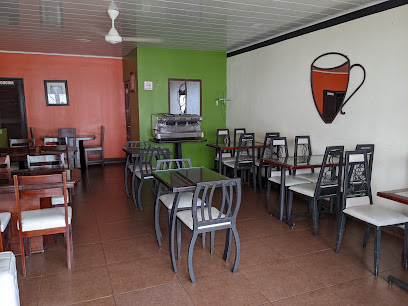
Restaurante La Vita è Bella
Experience authentic Italian cuisine at Restaurante La Vita è Bella in Matagalpa - where every meal is a celebration of flavor.
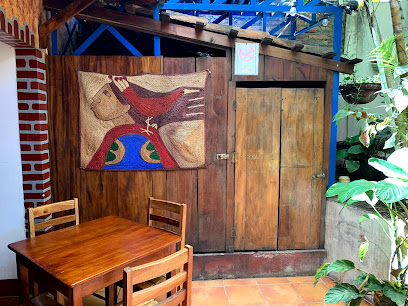
Restaurante La Pradera
Discover the authentic flavors of Nicaragua at Restaurante La Pradera in Matagalpa – where every dish tells a story.
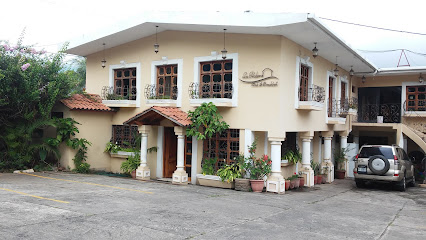
Selección Nicaragüense • Parque Darío
Discover authentic Nicaraguan flavors at Selección Nicaragüense Coffee Shop near Parque Darío in Matagalpa.
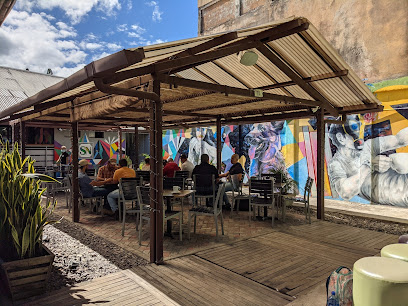
Comedor Los Coco
Experience authentic Nicaraguan flavors at Comedor Los Coco in Matagalpa—where delicious meets affordable.
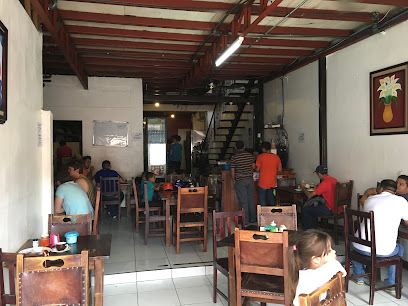
Buffet Oasis Matagalpa
Experience authentic Nicaraguan flavors at Buffet Oasis Matagalpa, where delicious food meets warm hospitality in a vibrant setting.
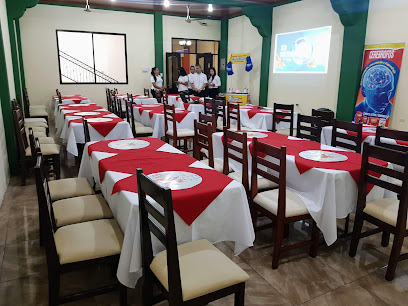
Mokali Café Matagalpa
Discover the essence of Nicaraguan coffee at Mokali Café in Matagalpa—where every sip tells a story.
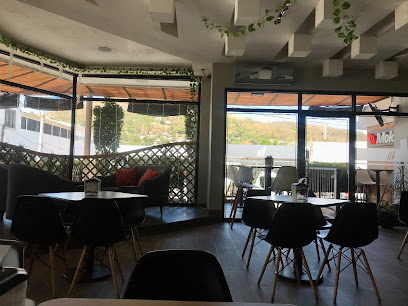
Hotel maná del Cielo
Experience comfort and delightful brunches at Hotel maná del Cielo in Matagalpa - your serene getaway amidst nature's beauty.

Gato Blanco
Experience authentic Nicaraguan cuisine at Gato Blanco in Matagalpa – where tradition meets flavor amidst breathtaking landscapes.

Restaurante Pescamar
Experience authentic Nicaraguan seafood at Restaurante Pescamar - where every dish tells a story of flavor and tradition.
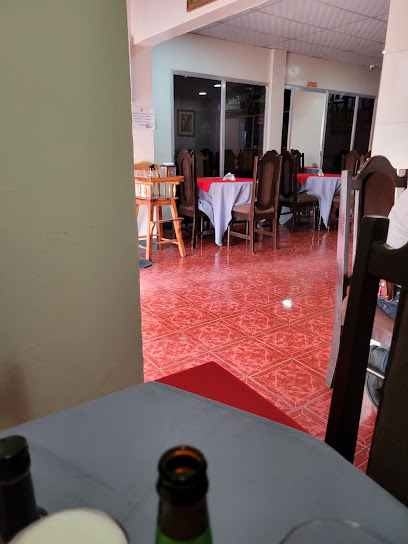
Restaurante El Balcon
Savor the rich tastes of Nicaragua at Restaurante El Balcon – where local culture meets delicious cuisine in Matagalpa.
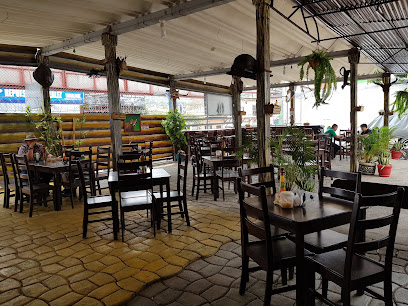
La Casona
Experience the rich flavors of Nicaragua at La Casona in Matagalpa – where every dish tells a story.
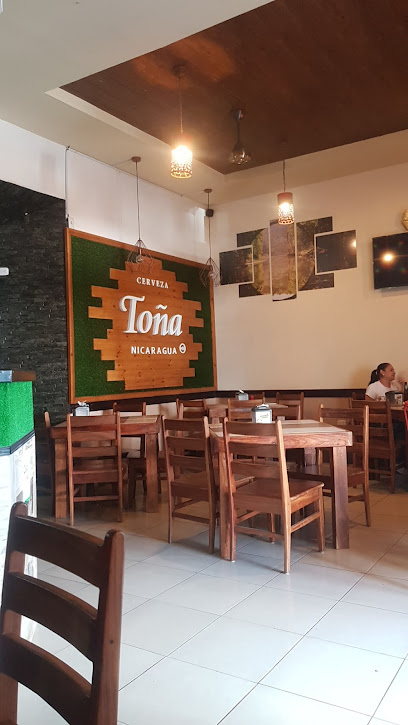
Picoteo Cafe
Discover authentic Nicaraguan flavors at Picoteo Cafe in Matagalpa - where great food meets warm hospitality.

CHILL ZONE CAFÉ LÚDICO
Discover Chill Zone Café Lúdico: Matagalpa's go-to spot for delicious bites, refreshing drinks, and fun board games amidst a cozy atmosphere.
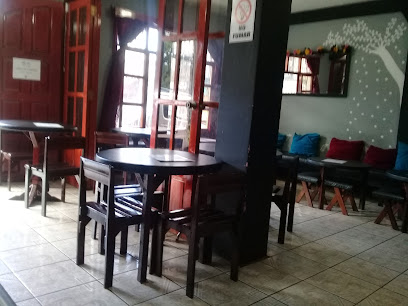
In & Out
Discover In & Out in Matagalpa: A delightful grill restaurant serving exquisite local flavors in a warm and inviting atmosphere.
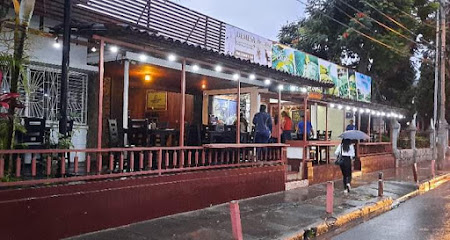
Markets, malls and hidden boutiques
Selva Negra
Experience the enchanting Selva Negra, a serene resort hotel and nature preserve in Matagalpa, Nicaragua, where adventure and relaxation blend seamlessly.
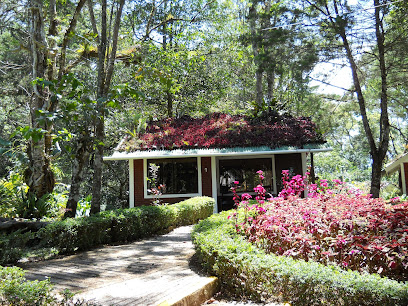
Eco-Lodge Cascada Blanca
Experience the tranquility and adventure at Eco-Lodge Cascada Blanca, a nature preserve offering hiking, relaxation, and authentic Nicaraguan cuisine.
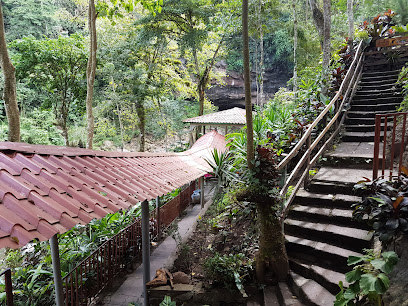
Coffee Shop Barista
Discover the heart of Matagalpa at Coffee Shop Barista, where local flavors meet a cozy atmosphere perfect for breakfast and coffee lovers.
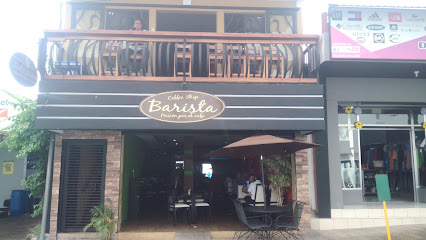
Selección Nicaragüense • Parque Darío
Experience the rich flavors of Nicaraguan coffee at Selección Nicaragüense, a charming coffee shop in the heart of Matagalpa.
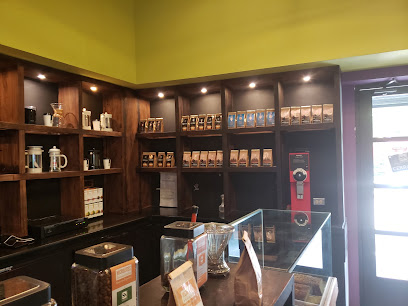
Mokali Café Matagalpa
Discover Mokali Café in Matagalpa - a cozy haven for coffee lovers, offering a rich selection of Nicaraguan brews and delightful local treats.

CHILL ZONE CAFÉ LÚDICO
Discover the perfect blend of relaxation and entertainment at Chill Zone Café Lúdico in Matagalpa, where great food meets fun board games.

Hostal La Buena Onda
Discover the heart of Nicaragua at Hostal La Buena Onda, a cozy haven in Matagalpa where hospitality meets local culture.
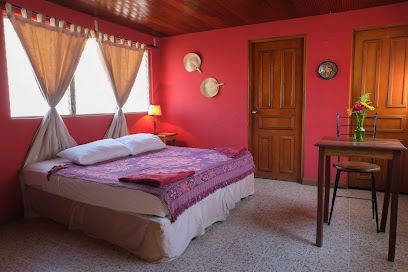
Yum Yum Donas
Experience the cozy charm of Yum Yum Donas in Matagalpa, where delicious coffee and baked goods await every traveler.
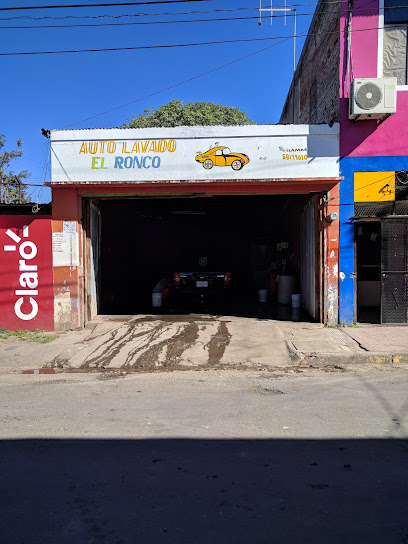
Diagon Alley Delicatessen store Matagalpa
Discover delightful flavors and a charming ambiance at Diagon Alley Delicatessen, a family-friendly gem in Matagalpa's coffee culture.
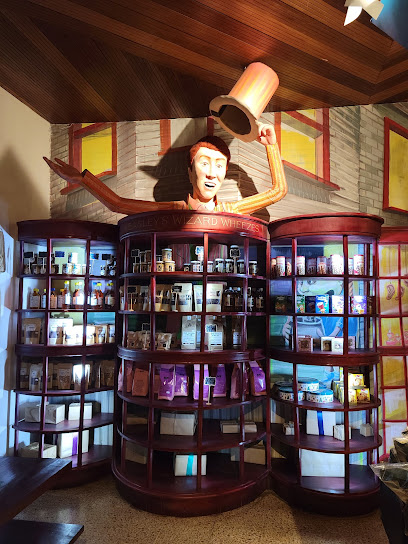
Coffee Time
Experience the best of Nicaraguan coffee culture at Coffee Time in Matagalpa, a cozy haven for coffee lovers and travelers alike.

Matagalpa Tours
Discover the beauty of Matagalpa with Matagalpa Tours, your gateway to stunning landscapes, local coffee farms, and rich Nicaraguan culture.

La Fruttelada
Indulge in the vibrant flavors of La Fruttelada, Matagalpa’s premier ice cream shop, where every scoop is a tropical delight.
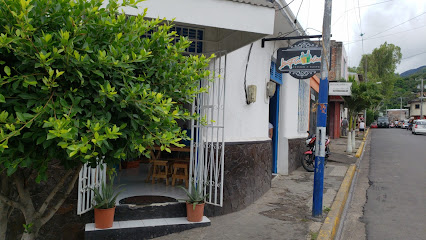
Mulukakao
Experience the rich flavors of artisanal chocolates and delightful cuisine at Mulukakao, a chocolate shop and café in Matagalpa.
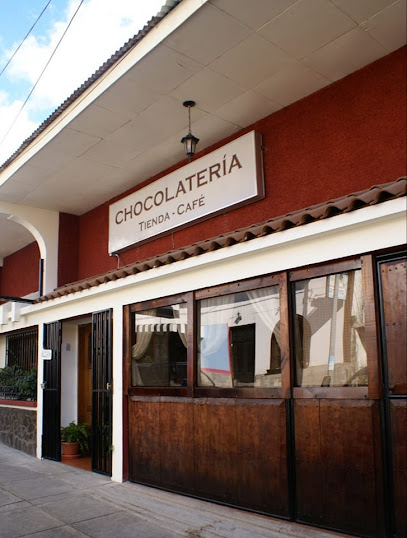
La 503 pupusas y mas
Experience the authentic taste of Salvadoran cuisine at La 503 Pupusas y Más in Matagalpa, Nicaragua, featuring the best pupusas and local coffee.
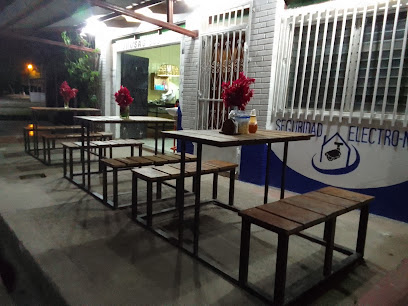
EsquinaDeLosCafes
Discover the heart of Nicaraguan coffee culture at Esquina De Los Cafes, where local beans and delightful flavors await.
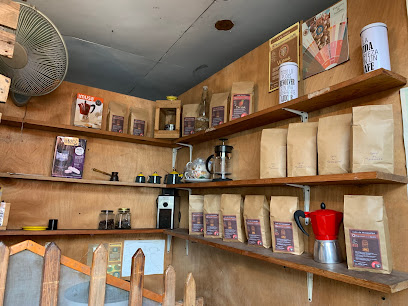
Essential bars & hidden hideouts
Coffee Shop Barista
Experience the essence of Matagalpa at Coffee Shop Barista, where local flavors and aromatic brews create a delightful coffee experience.
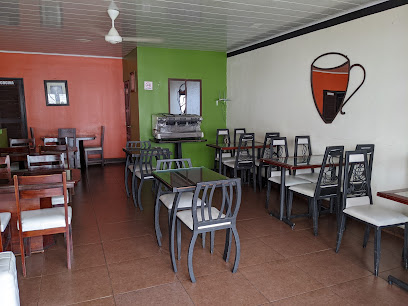
Selección Nicaragüense • Parque Darío
Discover the rich flavors of Nicaraguan coffee at Selección Nicaragüense, a cozy gem near Parque Darío in Matagalpa.
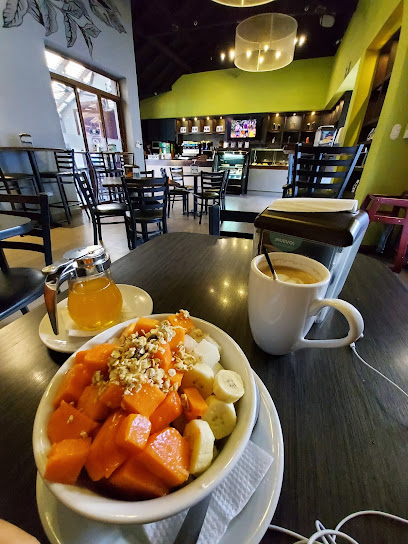
Woods Lounge Bar
Experience the vibrant nightlife at Woods Lounge Bar in Matagalpa, where electrifying music and delicious cocktails create unforgettable nights.
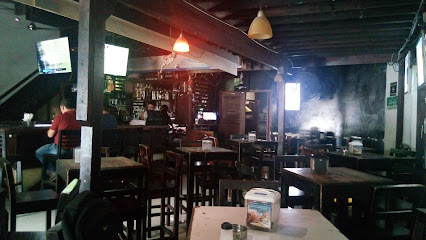
Mokali Café Matagalpa
Discover the charm of Mokali Café Matagalpa, where exceptional Nicaraguan coffee meets a cozy atmosphere in the heart of the city.
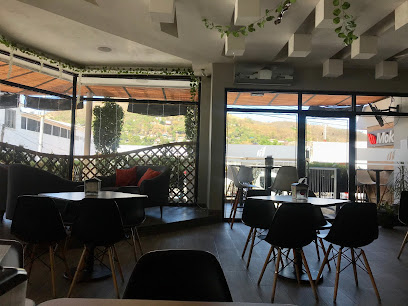
Gato Blanco
Discover Gato Blanco, a culinary haven in Matagalpa, where local flavors and delightful dishes come together in a cozy atmosphere.
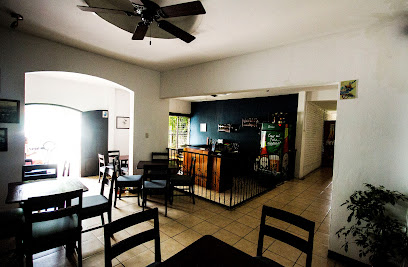
Artesanos Bar
Discover the vibrant flavors of Matagalpa at Artesanos Bar, where local ingredients meet culinary excellence in a lively atmosphere.
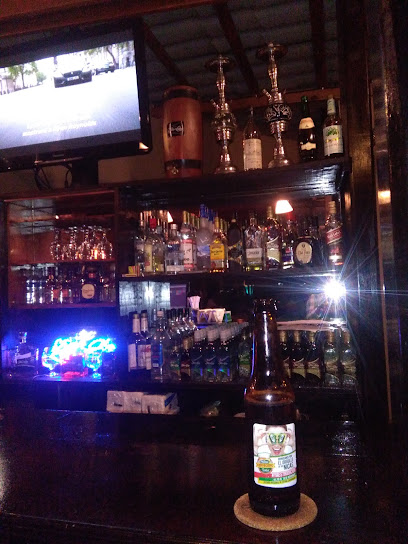
Picoteo Cafe
Discover the flavors of Nicaragua at Picoteo Café, a local gem in Matagalpa offering delicious grilled dishes and a welcoming atmosphere.
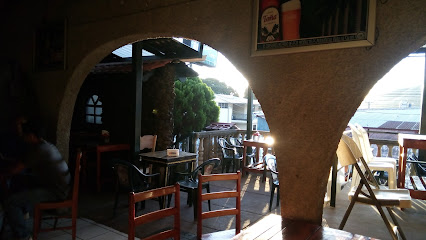
CHILL ZONE CAFÉ LÚDICO
Discover the perfect blend of relaxation and entertainment at Chill Zone Café Lúdico, a cozy café in Matagalpa with board games and delicious drinks.
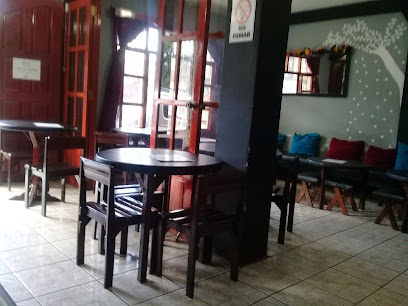
In & Out
Discover In & Out, Matagalpa's premier grill restaurant, where flavors meet ambiance for an unforgettable dining experience.
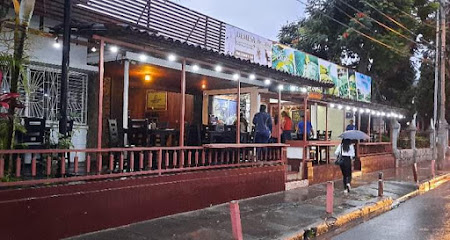
Retro and Vintage El Patio by Woods
Discover the vibrant atmosphere and retro charm of El Patio by Woods, a must-visit bar in Matagalpa for a taste of local nightlife.

Diagon Alley Delicatessen store Matagalpa
Discover the enchanting Diagon Alley Delicatessen in Matagalpa, where gourmet coffee and family-friendly charm meet for a unique culinary experience.
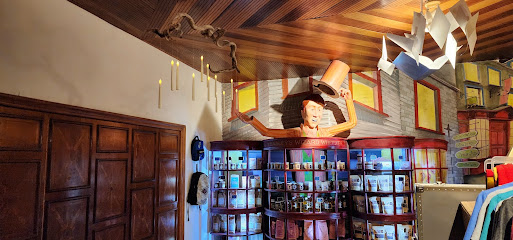
Coffee Time
Discover the rich flavors of Nicaragua at Coffee Time, the perfect coffee shop for tourists in Matagalpa.
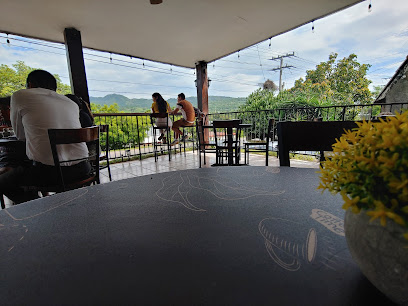
Cervezas Y Café
Discover the vibrant flavors of Nicaraguan cuisine at Cervezas Y Café in Matagalpa, a grill and bar for unforgettable culinary experiences.
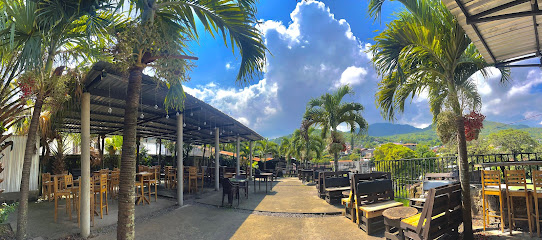
EsquinaDeLosCafes
Discover the rich flavors of Nicaraguan coffee at Esquina De Los Cafes, a cozy café in Matagalpa offering a warm atmosphere and local artistry.

El bunker
Discover the vibrant atmosphere of El Bunker, a beloved bar in Matagalpa offering a diverse drink menu and a taste of local culture.
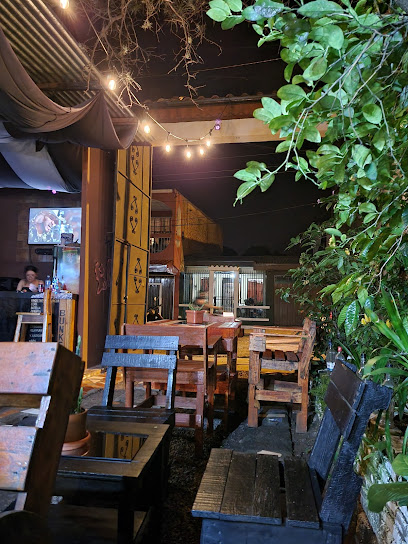
Local Phrases about Matagalpa Coffee Region
-
- Hello¡Hola!
[oh-lah] - Goodbye¡Adiós!
[ah-dee-ohs] - YesSí
[see] - NoNo
[noh] - Please/You're welcomePor favor/De nada
[por fah-vor/de nah-dah] - Thank youGracias
[grah-see-ahs] - Excuse me/SorryDisculpe/Lo siento
[dee-skool-peh/loh see-en-toh] - How are you?¿Cómo estás?
[koh-moh ehs-tahs] - Fine. And you?Bien. ¿Y tú?
[byen. ee too] - Do you speak English?¿Hablas inglés?
[ah-blahs een-glehs] - I don't understandNo entiendo
[noh ehn-tee-ehn-doh]
- Hello¡Hola!
-
- I'd like to see the menu, pleaseMe gustaría ver el menú, por favor
[meh goo-stah-ree-ah behr ehl meh-noo, por fah-vor] - I don't eat meatNo como carne
[noh koh-moh kahr-neh] - Cheers!¡Salud!
[sah-lood] - I would like to pay, pleaseMe gustaría pagar, por favor
[meh goo-stah-ree-ah pah-gahr, por fah-vor]
- I'd like to see the menu, pleaseMe gustaría ver el menú, por favor
-
- Help!¡Ayuda!
[ah-yoo-dah] - Go away!¡Vete!
[veh-teh] - Call the Police!¡Llama a la policía!
[yah-mah ah lah poh-lee-see-ah] - Call a doctor!¡Llama a un médico!
[yah-mah ah oon meh-dee-koh] - I'm lostEstoy perdido
[ehs-toy pehr-dee-doh] - I'm illEstoy enfermo
[ehs-toy ehn-fehr-moh]
- Help!¡Ayuda!
-
- I'd like to buy...Me gustaría comprar...
[meh goo-stah-ree-ah kohm-prahr] - I'm just lookingSolo estoy mirando
[soh-loh ehs-toy meer-ahn-doh] - How much is it?¿Cuánto cuesta?
[kwan-toh kwehs-tah] - That's too expensiveEso es demasiado caro
[eh-soh ehs deh-mah-see-ah-doh kah-roh] - Can you lower the price?¿Puedes bajar el precio?
[pweh-dehs bah-hahr ehl pree-see-oh]
- I'd like to buy...Me gustaría comprar...
-
- What time is it?¿Qué hora es?
[keh oh-rah ehs] - It's one o'clockEs la una
[ehs lah oo-nah] - Half past (10)Media hora (10)
[meh-dee-ah oh-rah (deez)] - MorningMañana
[mah-nyah-nah] - AfternoonTarde
[tahr-deh] - EveningNoche
[noh-cheh] - YesterdayAyer
[ah-yehr] - TodayHoy
[oy] - TomorrowMañana
[mah-nyah-nah] - 1Uno
[oo-noh] - 2Dos
[dohs] - 3Tres
[trehs] - 4Cuatro
[kwah-troh] - 5Cinco
[seen-koh] - 6Seis
[says] - 7Siete
[syeh-teh] - 8Ocho
[oh-choh] - 9Nueve
[nweh-veh] - 10Diez
[dyehs]
- What time is it?¿Qué hora es?
-
- Where's a/the...?¿Dónde está el/la...?
[dohn-deh ehs-tah ehl/lah] - What's the address?¿Cuál es la dirección?
[kwal ehs lah dee-rehk-syon] - Can you show me (on the map)?¿Puedes mostrarme (en el mapa)?
[pweh-dehs mohs-trar-meh (ehn ehl mah-pah)] - When's the next (bus)?¿Cuándo es el próximo (autobús)?
[kwan-doh ehs ehl proh-ksee-moh (ow-toh-boos)] - A ticket (to ....)Un boleto (para ....)
[oon boh-leh-toh (pah-rah)]
- Where's a/the...?¿Dónde está el/la...?
History of Matagalpa Coffee Region
-
Before the arrival of the Spanish, the Matagalpa region was inhabited by indigenous groups such as the Matagalpa and Chontales people. These groups were known for their agricultural practices, including the cultivation of maize, beans, and cacao. They also engaged in trade with neighboring regions, exchanging goods like ceramics and textiles.
-
The Spanish arrived in the region in the early 16th century and began to exert control over the indigenous populations. The introduction of European diseases, combined with forced labor and displacement, led to a significant decline in the indigenous population. The area became part of the Spanish colonial territory of Nicaragua, and its rich soil began to be exploited for agricultural purposes.
-
Coffee was introduced to the Matagalpa region in the mid-19th century by European immigrants, particularly Germans, who recognized the area's potential for coffee cultivation due to its fertile soil and ideal climate. The first coffee plantations were established in the 1850s, and the industry quickly grew, transforming the region's economy and landscape.
-
The late 19th and early 20th centuries saw a coffee boom in Matagalpa. The region became one of the leading coffee producers in Nicaragua, attracting both local and foreign investments. This period also saw significant social changes, including the migration of workers to the area and the development of infrastructure such as roads and railways to support the coffee industry.
-
The Nicaraguan Revolution of the 1970s and 1980s had a profound impact on the Matagalpa coffee region. Land reforms and the nationalization of large plantations disrupted the coffee industry. Many coffee estates were redistributed to small farmers, altering the social and economic landscape of the region. The conflict also led to infrastructure damage and economic instability.
-
In recent decades, the Matagalpa coffee region has rebounded from the disruptions of the revolution. Efforts have been made to improve the quality of coffee through sustainable farming practices and certifications such as Fair Trade and organic. The region is now known for producing some of Nicaragua's finest coffee, attracting tourists and coffee enthusiasts from around the world.
-
The Matagalpa region is rich in cultural heritage, with a blend of indigenous, Spanish, and immigrant influences. This cultural tapestry is celebrated through various festivals and events, such as the annual Coffee Festival, which highlights the region's coffee culture and history. Traditional music, dance, and cuisine are also integral parts of Matagalpa's cultural identity.
Matagalpa Coffee Region Essentials
-
Matagalpa is located in the northern highlands of Nicaragua, approximately 127 kilometers from the capital city, Managua. The most common way to reach Matagalpa is by road. From Managua, you can take a bus from the Mayoreo bus terminal, which offers several daily departures to Matagalpa. The journey typically takes around 2.5 to 3 hours. Alternatively, you can hire a private taxi or rent a car for a more comfortable and flexible travel experience. There are no direct flights to Matagalpa, so the nearest airport is Augusto C. Sandino International Airport in Managua.
-
Once in Matagalpa, you can use local taxis, which are readily available and affordable. Public buses and minibuses (known locally as 'micros') are common and connect various parts of the city and surrounding areas. For a more immersive experience, consider renting a bicycle to explore the coffee farms and scenic countryside. Walking is also a great option for getting around the central parts of Matagalpa, as many attractions are within close proximity.
-
The official currency in Nicaragua is the Nicaraguan Córdoba (NIO). Credit cards are accepted in most hotels, restaurants, and larger shops in Matagalpa. However, it is advisable to carry some cash, especially for small purchases and in rural areas. ATMs are available in Matagalpa, but it is wise to withdraw sufficient cash in Managua or other larger cities before traveling to more remote areas.
-
Matagalpa is generally considered safe for tourists, but it is important to remain vigilant and take standard precautions. Avoid walking alone at night in unfamiliar areas and keep an eye on your belongings in crowded places. Some areas on the outskirts of the city have higher crime rates, so it's best to stay within well-known and populated areas. Always use registered taxis or transportation services recommended by your accommodations.
-
In case of emergency, dial 118 for police, 128 for medical emergencies, and 115 for fire services. Matagalpa has a local police station and several medical facilities, including the Selva Negra Hospital. It is recommended to have travel insurance that covers medical emergencies. For minor health issues, there are numerous pharmacies where you can purchase over-the-counter medications.
-
Fashion: Do dress modestly, especially in rural areas and when visiting religious sites. Avoid wearing overly revealing clothing. Religion: Do respect local religious customs and traditions. Be mindful when visiting churches and always ask for permission before taking photos inside. Public Transport: Do be respectful to other passengers and offer your seat to elderly or pregnant individuals. Avoid eating or drinking on public transport. Greetings: Do greet people with a friendly 'Hola' or 'Buenos días'. A handshake is also common when meeting someone for the first time. Eating & Drinking: Do try local coffee and traditional dishes like 'gallo pinto' and 'nacatamales'. Don't refuse food or drink offerings, as it may be considered impolite.
-
To experience Matagalpa like a local, visit the farmers' markets where you can buy fresh produce and artisanal products. Engage with local coffee farmers to learn about the coffee production process. Participate in a coffee tasting tour to appreciate the region's rich coffee culture. For outdoor enthusiasts, explore the numerous hiking trails in the surrounding mountains and visit natural attractions like the Cascada Blanca waterfall. Don't miss the annual Coffee Festival in February, which celebrates the region's coffee heritage with music, dance, and various events.
Trending Landmarks in Matagalpa Coffee Region
-
Selva Negra
-
Eco-Lodge Cascada Blanca
-
Coffee Shop Barista
-
Mirador Calvary
-
Selección Nicaragüense • Parque Darío
-
Mokali Café Matagalpa
-
Selva Negra Ecolodge
-
Gato Blanco
-
Hostal La Buena Onda
-
MOUNTAIN OF PEACE
-
Diagon Alley Delicatessen store Matagalpa
-
Coffee Time
-
Matagalpa Tours
-
Cerro El Calvario,Matagalpa.
-
Mulukakao
Nearby Cities to Matagalpa Coffee Region
-
Things To Do in Managua
-
Things To Do in Masaya
-
Things To Do in Granada
-
Things To Do in Ometepe
-
Things To Do in Rivas
-
Things To Do in Tegucigalpa
-
Things To Do in San Juan del Sur
-
Things To Do in San Miguel
-
Things To Do in Liberia
-
Things To Do in Playa Flamingo
-
Things To Do in Guanacaste
-
Things To Do in Tamarindo
-
Things To Do in La Fortuna
-
Things To Do in Monteverde
-
Things To Do in La Ceiba

